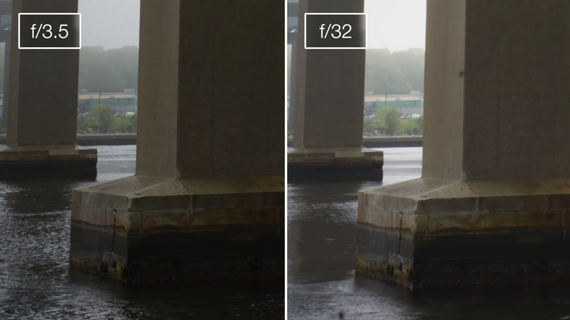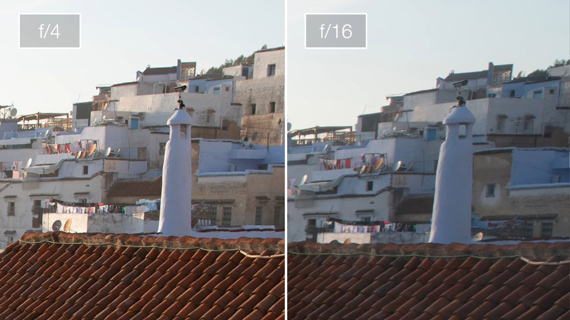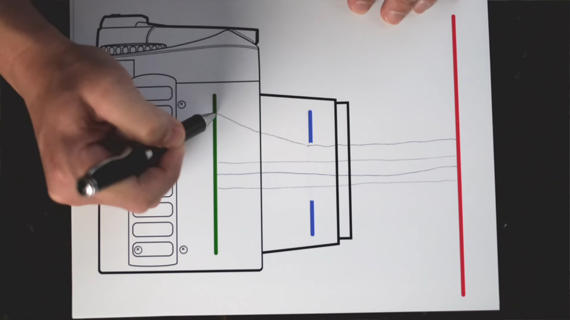Who doesn’t love sharp images? One of the factors that affect sharpness is the aperture value used to take an image. Wider apertures have less area in focus. As the aperture is narrowed down, the sharpness gradually increases, and after a certain point, the image again starts getting softer. This is due to a phenomenon of light called diffraction. Photographer Tony Northrup explains in detail what diffraction is and how it affects sharpness in your images:
Landscape and macro photographers usually use higher f-stop numbers. This allows the camera to record an image that’s sharp in the foreground and background.
“We think of higher f-stop numbers as adding more sharpness. But in reality, at the place where you’re focusing, the opposite is really true.”
A lens usually performs best a stop or two above its lowest f-stop number. As you go on increasing the f-stop value to values like f/16 or f/22, diffraction comes into play and ruins your sharpness. Have a look at the following comparative images:


However, this doesn’t necessarily mean that you should stop shooting at higher f-stop values. Just avoid using overly narrow f-stops. And if you want to be extra sure, simply set your camera to aperture priority mode and take a series of photos at different apertures. You can then choose the best of the bunch later. For ultimate sharpness, focus stacking is always an option.
The Science Behind Diffraction
As light passes through the opening between the aperture blades, the light particles behave normally and pass on straight. However, the light particles that pass close to the aperture blades bend slightly from their actual path. The variance might be just a few pixels, but that’s enough to reduce the sharpness of your image.

“It seems like the photon is interacting with the electrons of the atoms of the aperture blade.”
If the aperture is wide open, a greater number of the photons will pass undisturbed. But at small aperture settings, most of the photons will have to pass close to the aperture blades, resulting in increased deviations from the actual path. The increased deviations create images that are less sharp.
“If the pull from the edge of the aperture affected every photon exactly the same, we wouldn’t see a reduction in sharpness.”
Sweet Spot of a Lens
Almost every lens tends to have a sweet spot where it produces the sharpest results. Why is that? This has to do with the optical quality and the effects of diffraction.
Cheaper lenses perform okay at the center but have greater aberrations at their edges. However, this is not exactly true when it comes to high-end lenses. So, when you narrow down the aperture, the lens will use more of the center part, so the images appear sharper. But along with it, the effects of diffraction will slowly start creeping in that will make the images softer. Somewhere in the middle will be an f-stop value wherein the lens will have a balance between the two and the image will be the sharpest—hence the sweet spot.
To find the sweet spot, set your camera and lens up on a tripod and take multiple shots at varying f-stops with delayed shutter enabled. Then, closely examine your images to determine the f-stop value at which the lens produces the best results.
Have you figured out the best apertures for the lenses you use?
Go to full article: How Diffraction Affects Sharpness in Photography
What are your thoughts on this article? Join the discussion on Facebook
PictureCorrect subscribers can also learn more today with our #1 bestseller: The Photography Tutorial eBook
The post How Diffraction Affects Sharpness in Photography appeared first on PictureCorrect.
from PictureCorrect https://ift.tt/30nPfLA
via IFTTT






0 kommenttia:
Lähetä kommentti